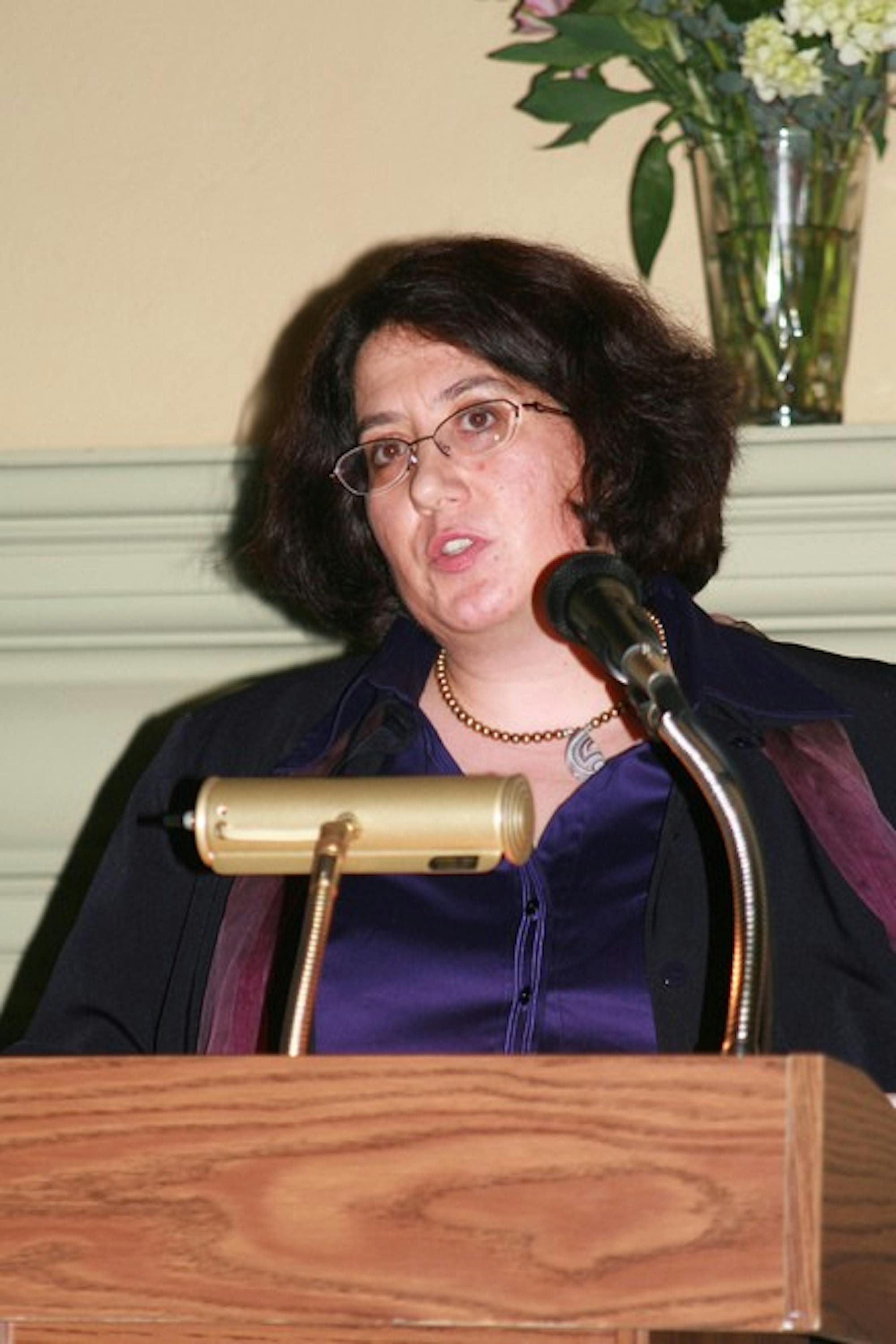Greene's biographer Heidi Ardizzone, an American studies professor at the University of Notre Dame, used that statement as the title and theme of a lecture about Greene's life, held in the Class of 1902 Room in Baker-Berry Library Thursday.
Greene defied race and gender barriers to become the director of the Morgan Library in New York City in 1924, rising to prominence amid rumor, glamour and intrigue, Ardizzone said.
Born Belle Marian Greener in Washington, D.C., in 1879 to two black parents, Greene's light skin allowed her to pass as white later in life. After moving with her mother and siblings to New York City at the age of 18, Greene changed her name in order to distance herself from her estranged father and to support her claim that her dark complexion was inherited from a Portuguese grandmother rather than black parents, Ardizzone said.
As a young woman, Greene worked as a clerk in the library at Princeton University. Despite little formal training, Greene became an expert in illuminated works and rare books, which she later used at the Morgan Library. The Morgan Library now collects, exhibits and sponsors research on illuminated manuscripts, rare books and fine bindings.
Greene's position at the Morgan Library afforded her an unusual amount of power for a woman in the early 20th century, according to Ardizzone. She developed friendships with artists, poets, politicians, actresses and royalty, but as her fame increased, people began to question her background. Rumors swirled about her ethnicity, but Greene remained elusive and vague, Ardizzone said.
In her correspondence with her lover, art critic Bernard Berenson, Greene often made direct references to the rumors about her race, Ardizzone said. She referred to the "gorilla" Berenson saw in her and once referred to herself mockingly as "so damn black," according to Ardizzone. Despite drawing attention to her race, however, Belle never fully admitted to being black.
Ardizzone said she hoped her research would allow her to better understand how Greene identified herself. Greene often presented a juxtaposed public image -- she opposed women's suffrage but regularly attended political events herself, and sparred with prominent lesbian activists of the day, while often remarking on her sexual appeal to women.
"Shocking people was her tactic," Ardizzone said. "These conflicting images about who she was allowed her to 'hide in the light.'"
Ardizzone concluded that Greene was able to maintain her black identity while living as a white woman but could never be fully honest about her race because it would have threatened her "social and economic position."
After her speech, Ardizzone discussed her motivation for writing a biography of Greene, called "An Illuminated Life -- Belle da Costa Greene's Journey from Prejudice to Privilege."
"When I was an undergraduate at Cornell [University], I could take classes in African studies, which totally ignored women, or women's studies, which totally ignored African Americans," she said. "It wasn't until my senior year that I could study the history of African-American women specifically."
The speech was co-sponsored by the Friends of Dartmouth College Library and the Dartmouth College Library Diversity Committee. David Sandberg, library assistant in the Matthews-Fuller Health Sciences Library and member of the Diversity Committee, said he visited the Morgan Library in 2006, when the library had recently finished renovations and Ardizzone had almost completed her book. The visit led him to suggest that Dartmouth host Ardizzone in one of several events focused on diversity, he said.
The Library Diversity Committee was created five years ago in order to encourage "openness, awareness and acceptance on issues that might be out of the norm," according to Jamie Dalton, chair of the committee.
Jeffrey Horrell, dean of Libraries and Librarian of the College, shared Dalton's sentiments on the committee's importance.
"Dartmouth has a deep interest in diversity, not just in the form numbers but also in the issues we discuss," Horrell said. "We still have a lot of work to do but we're creating opportunities to have conversations about the issues that we deal with today."
The Friends of Dartmouth College Library aims to promote the library and make its resources as widely available as possible, according to Richard Thorner '86, chair of the group's executive committee. Events such as Ardizzone's lecture, he said, have helped to increase awareness of diversity on campus.
"In 1986, there was no Diversity Committee and the term 'diversity' was definitely not as widely used," Thorner said.




